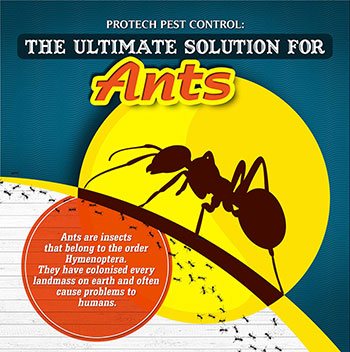The Duty Of Parasite Exterminators In Environmental Sustainability
The Duty Of Parasite Exterminators In Environmental Sustainability
Blog Article
Material Writer-Rindom Vang
You could assume that bug exterminators are only worried about eliminating pests, but their duty goes beyond that. They play a crucial component in ecological sustainability.
By utilizing integrated insect management strategies, they not only remove insects but also secure biodiversity.
Additionally, they utilize lasting insect extermination methods to alleviate environmental threats.
So, following time you question the importance of pest exterminators, remember their contribution to a greener and much healthier world.
The Relevance of Integrated Bug Management
You ought to comprehend the importance of integrated bug monitoring in maintaining a sustainable atmosphere.
Integrated navigate to this website (IPM) is a strategy that concentrates on preventing and regulating pests while reducing making use of unsafe chemicals. By applying IPM approaches, you can successfully handle parasite populaces without causing harm to the environment.
One vital facet of IPM is making use of organic controls, such as killers and parasites, to normally control pest populations. This minimizes the need for chemical pesticides, which can have destructive effects on wildlife and communities.
Additionally, IPM advertises using social and physical controls, such as plant rotation and exemption strategies, to prevent bugs from coming to be an issue to begin with.
Safeguarding Biodiversity Via Insect Control
We can secure biodiversity through effective bug control methods that focus on the conservation of all-natural environments. By employing responsible bug control methods, we can shield and preserve the fragile balance of varieties within our environment. Below are 3 methods which insect control adds to safeguarding biodiversity:
- ** Preserving indigenous vegetation and fauna ** - By targeting intrusive types that intimidate native plants and pets, bug control assists make sure the survival of indigenous varieties and maintains the all-natural variety of ecological communities.
- ** Protecting against the spread of diseases ** - Regulating parasites such as insects and ticks reduces the danger of illness spreading to wildlife populations, safeguarding biodiversity and protecting against possible outbreaks.
- ** Saving threatened types ** - By taking care of parasites that victimize or compete with threatened species, insect control efforts can enhance the opportunities of survival and promote the recuperation of at risk populaces.
With liable insect control strategies, we can proactively contribute to the conservation of biodiversity and the sustainability of our natural world.
Mitigating Environmental Dangers With Lasting Parasite Extermination Approaches
By utilizing lasting bug extermination techniques, you can successfully reduce environmental threats while making certain the safety and well-being of both humans and the natural environment. Standard parasite control approaches typically entail using hazardous chemicals that can have detrimental effects on the setting.
However, lasting pest extermination methods concentrate on lessening these risks by utilizing environmentally friendly choices. As an example, integrated bug monitoring (IPM) approaches focus on the use of non-toxic and eco-friendly products, in addition to natural predators to regulate pest populations. This strategy not only reduces the unfavorable impact on the setting however also helps to preserve the fragile balance of the environment.
Additionally, sustainable parasite elimination techniques promote the conservation of biodiversity by targeting particular parasites without damaging valuable organisms. By adopting these methods, you can add to a much more sustainable and environment-friendly method to pest control.
Verdict
You are the pest exterminator, the guardian of nature's harmony. With incorporated you can try this out , you stabilize the fragile ecosystem, making certain the survival of varied species.
With sustainable approaches, you minimize environmental threats, keeping the fragile balance undamaged.
Like a symphony conductor, you manage the rhythm and circulation, securing the biodiversity that dancings in best harmony.
With every action you take, you produce a world where nature flourishes, where insects pull away, and where sustainability reigns supreme.
